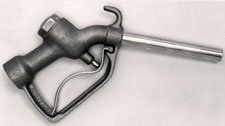Aero-Tips!
A good pilot is always learning -- how many times have you heard
this old standard throughout your flying career? There is no truer
statement in all of flying (well, with the possible exception of
"there are no old, bold pilots.") It's part of what makes aviation
so exciting for all of us... just when you think you've seen it
all, along comes a scenario you've never imagined.

Aero-News has called upon the expertise of Thomas P. Turner,
master CFI and all-around-good-guy, to bring our readers -- and us
-- daily tips to improve our skills as aviators, and as
representatives of the flying community. Some of them, you may have
heard before... but for each of us, there will also be something we
might never have considered before, or something that didn't
"stick" the way it should have the first time we memorized it for
the practical test.
It is our unabashed goal that "Aero-Tips" will help our readers
become better, safer pilots -- as well as introducing our
ground-bound readers to the concepts and principles that keep those
strange aluminum-and-composite contraptions in the air... and allow
them to soar magnificently through it.
Look for our daily Aero-Tips segments, coming each day to you
through the Aero-News Network. Suggestions for future Aero-Tips are
always welcome, as are additions or discussion of each day's tips.
Remember... when it comes to being better pilots, we're all in this
together.
Aero-Tips 05.11.06
 One of aviation's few "cardinal
sins" is fuel exhaustion -- running out of gas. It's one of the
leading causes of engine failure (see my article in the April 2006 issue of
Aviation Safety).
One of aviation's few "cardinal
sins" is fuel exhaustion -- running out of gas. It's one of the
leading causes of engine failure (see my article in the April 2006 issue of
Aviation Safety).
Tragically, fuel exhaustion is often fatal. It's absolutely
vital to know how to predict fuel requirements, monitor fuel use in
flight, and safely arrive with a substantial fuel reserve
remaining.
From Advisory Circular
61-23C, the Pilot's Handbook of Aeronautical
Knowledge: Fuel Consumption --
Airplane fuel consumption rate is computed in gallons per hour.
Consequently, to determine the fuel required for a given flight,
the time required for the flight must be known. Time in flight
multiplied by rate of consumption gives the quantity of fuel
required. For example, a flight of 400 NM at a groundspeed of 100
knots requires 4 hours. If the plane consumes 5 gallons an hour,
the total consumption will be 4 x 5, or 20 gallons.
The rate of fuel consumption depends on many factors: condition
of the engine, propeller pitch, propeller RPM, richness of the
mixture, and particularly the percentage of horsepower used for
flight at cruising speed. The pilot should know the approximate
consumption rate from cruise performance charts, or from
experience. In addition to the amount of fuel required for the
flight, there should be sufficient fuel for reserve.
Fuel for climb
AC 61-23C presumes the fuel burn rate is constant. Don't forget
the added fuel burn during climb -- climb usually represents a
fairly small part of a trip, but the high fuel burn rate is
significant in many airplanes. For instance, a 300-horsepower
single-engine airplane may burn 15 to 17 gallons per hour (gph) in
cruise but need 25 gph or more in climb. Climb from sea level to
8000 feet at 800 fpm and you'll burn over four gallons in the first
10 minutes. Sure, descent at the end of the flight may offset this,
but don't count on it. It may not be coincidental that many fuel
exhaustion accidents happen within sight of the destination
airport.
Aero-tip of the day: Don't fall into the trap
of figuring fuel requirements by using Pilots Operating Handbook
cruise power charts alone. There's a lot more involved in fuel
planning, which we'll explore in upcoming editions of
Aero-Tips.
 ANN's Daily Aero-Linx (04.16.24)
ANN's Daily Aero-Linx (04.16.24) Aero-News: Quote of the Day (04.16.24)
Aero-News: Quote of the Day (04.16.24) Airborne 04.10.24: SnF24!, A50 Heritage Reveal, HeliCycle!, Montaer MC-01
Airborne 04.10.24: SnF24!, A50 Heritage Reveal, HeliCycle!, Montaer MC-01 Airborne 04.12.24: SnF24!, G100UL Is Here, Holy Micro, Plane Tags
Airborne 04.12.24: SnF24!, G100UL Is Here, Holy Micro, Plane Tags Airborne-Flight Training 04.17.24: Feds Need Controllers, Spirit Delay, Redbird
Airborne-Flight Training 04.17.24: Feds Need Controllers, Spirit Delay, Redbird




